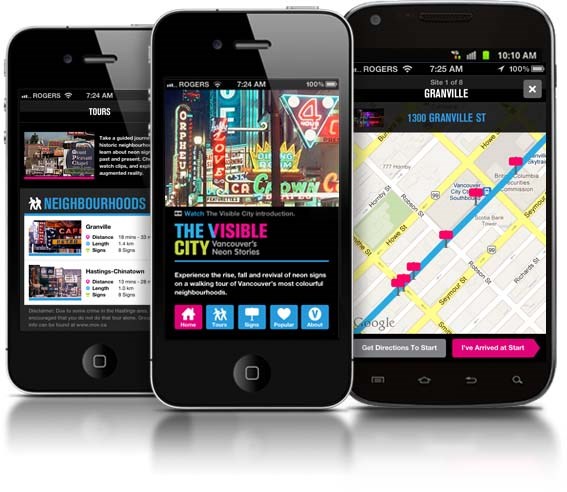 |
PROVOKE, ENGAGE, ANIMATE. Our vision at the Museum of Vancouver (MOV) is to hold a mirror up to the city and lead provocative conversations about its past, present, and future. Linking the historical record and the living experiences of its visitors to what is happening socially, politically, and culturally NOW; we honour the material culture of the city: mixing history, archaeology, visual arts, design, architecture, urban planning, music, performance, new media, design, fashion, popular culture, and photography. Check us out on our blog, talk to us on Twitter, or stay up to date through Facebook. |
 Talking about apps has been a big thing in the museum world lately – how do you use technology to engage visitors? How can you enhance a historical or artistic experience? What is the role of the museum in using technology to further their mission?
Talking about apps has been a big thing in the museum world lately – how do you use technology to engage visitors? How can you enhance a historical or artistic experience? What is the role of the museum in using technology to further their mission?
Some museums, like the Guggenheim, launched into the forefront of app development, taking the risk for the rest of us, spending years developing an app that later became irrelevant. Others, like the Museum of London, came in a bit later, developing their street museum only to discover
that it actually increased attendance to their physical location.
When the MOV launched Neon Vancouver | Ugly Vancouver (our neon sign exhibition here at our Kitsilano building) it sparked an unprecedented flow of stories from Vancouverites that
signaled how deeply enmeshed the city’s neon is with local history and ourcivic identity.
Of course, telling the stories of some of Vancouver’s most iconic signs — like the Vogue, Save-On-Meats, or The Orpheum — by bringing them into the MOV wasn’t an option (they’re still in use, and they’re so large they wouldn’t even fit in the building!). So we dreamt up the next best thing: a virtual exhibition and mobile app that would share 40+ stories about 50+ signs and use augmented reality technology to help with the visuals.
At the end of 2011 — with some much appreciated federal funding from Heritage Canada (Virtual Museums Canada) in hand — Hanna Cho, the MOV’s Curator of Dialogue & Engagement, rolled up her sleeves and began work with a talented team of archival researchers, visual storytellers, and interactive producers to create The Visible City.
Just 18 months later we’re thrilled to be releasing an app that is the first of its kind in North America. It takes augmented reality to the streets, and provides countless historical photos, audio stories, and contemporary insights from notable Vancouverites like Dal Richards (legendary big band leader), Vancouver punk icon Joe Keithley of DOA, architect Gregory
Henriquez, and Judy Graves, Vancouver’s advocate for the homeless.
The exhibition traces the rise, fall, and revival of neon in Vancouver, and enables people to explore the rich social and cultural histories associated with the signs. While there are hundreds of neon stories that pepper our city’s historical and contemporary landscape we couldn’t
possibly include them all (there were, after all, an estimated 19,000 signs in the 60s). We ended up focusing on some key signs and stories that illustrate the role of neon in Vancouver’s civic evolution. Do you think we’re missing a sign? We encourage you to add your own photos to the Flickr pool!
We hope you’ll download the app, take one of the two tours with a friend, and contribute your own impressions, stories, and photos to the exhibition!
The app is free to download from iTunes or GooglePlay, or to view online at www.thevisiblecity.ca .


